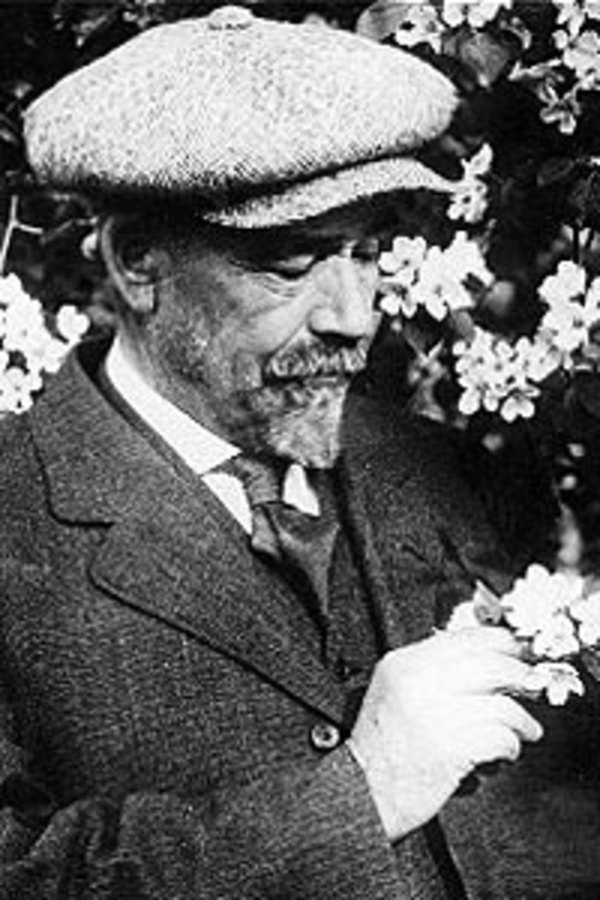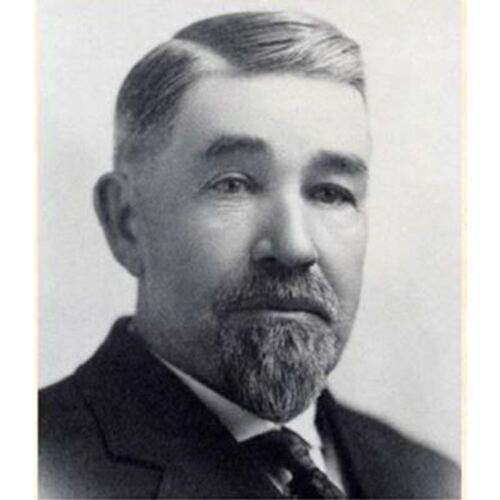
Source: Link
STEVENSON, ALEXANDER PATTERSON, horticulturist and office holder; b. 14 Feb. 1854 in Bannockburn, Scotland; m. 19 Dec. 1877 Catherine Campbell, and they had four daughters and three sons; d. 22 Dec. 1922 in Santa Monica, Calif.
The eldest son in a large Scottish family, Alexander Stevenson was expected to make his own way, so in 1870 he left Scotland for Canada. Experienced in farm work, he spent the next several years as a farm and forestry labourer around Toronto and Markham, Ont. In 1874 he travelled by the Red River route to Manitoba.
Encouraged by people he met to homestead at the edge of the Pembina Hills, midway between the present towns of Morden and Miami, Stevenson immediately began to experiment with fruit growing. The early years were difficult; most of his trees died over winter. His first success was with crab apples and from those he went on to strawberries, standard apples, and other fruit, including pears, mammoth plums, grapes, and black cherries. In spite of grasshopper plagues, he persevered.
Stevenson’s success was greatly aided by two factors. First, by 1890 he had obtained stock which had originated in Russia and had come to him from the Iowa State College of Agriculture and Mechanic Arts in Ames, Iowa. Grafting onto this stock, he created new varieties of fruit trees, including the Pine Grove Red apple and the Manitoba plum. The second factor, of equal or greater importance, was his insistence on protection for his trees, in the form of windbreaks and shelter belts. Indeed, his zeal for shelter belts led to his being appointed, at least as early as 1901, tree-planting inspector for the forestry branch of the Department of the Interior, attached to the Forest Nursery Station at Indian Head (Sask.). In this role he lectured extensively in the west on horticultural and forestry matters, becoming so prominent that in 1910 the Farmer’s Advocate and Home Journal felt it was “safe to say that no man in the Canadian West is more generally known throughout the prairie provinces.”
Stevenson was a careful horticulturist. In 1890, for example, he wrote to the Nor’-West Farmer and Miller reporting on the results of growing forest-tree seedlings which he had obtained from the experimental farm in Ottawa. He described their survival rates and their measured rates of growth. He operated Pine Grove Nursery, an orchard and nursery, for 37 years, producing especially apples in commercial quantities. In 1909 he sold $500 worth of apples. Two years later his orchard produced 70 barrels and in 1913, 300 barrels. Eventually, he had 25 acres of land producing fruit. He had the best exhibit of apples at the Dry Farming Congress for Alberta, Saskatchewan, and Manitoba held in Lethbridge in 1912 and for it he received a prize of a case of silver valued at $400.
A strong supporter of his community, Nelson, Stevenson served as a school trustee and as an elder of the Presbyterian church. The thriving town disappeared almost overnight in 1881 when the Manitoba South-Western Colonization Railway was constructed a few miles further south, near what became Morden. Stevenson’s success and fame in growing fruit in the region led to the establishment of the Dominion Experimental Farm at Morden in 1915. Stevenson had retired two years earlier, however. He turned his nursery over to his sons and moved to Winnipeg. While there, he spent much time at the Manitoba Agricultural College, where his experience was appreciated.
The commitment and careful experimentation of Alexander Stevenson were significant in clearly establishing the fact that good fruit could be grown on the prairies of western Canada. Many prairie residents have benefited from the work of the man who became known as the “Apple King.”
Alexander Patterson Stevenson’s publications include Growing cherries in Manitoba ([Winnipeg?], 1914) and Growing plums in Manitoba ([Winnipeg?], 1914), as well as various articles on horticulture and sylviculture; a listing is available in Science and technology biblio. (Richardson and MacDonald). Several of Stevenson’s reports as tree-planting inspector appear in Can., Parl., Sessional papers, reports of the Dept. of the Interior, 1902-5.
Farmer’s Advocate and Home Journal (Winnipeg), 4 Jan. 1911. Manitoba Free Press, 23 Dec. 1922. Nor’-West Farmer and Miller (Winnipeg), December 1890. Winnipeg Tribune, 31 Aug. 1921. The hills of home: a history of the municipality of Thompson (Miami, Man., 1968). [J. W.] G. MacEwan, Fifty mighty men (Saskatoon, 1958). Manitoba Agricultural Extension News (Winnipeg), 3 (1923), no.1: 3-4. Western Canadian Soc. for Horticulture, Development of horticulture on the Canadian prairies; an historical review, ed. H. S. Fry (Edmonton, 1986).
Cite This Article
David R. Dyck, “STEVENSON, ALEXANDER PATTERSON,” in Dictionary of Canadian Biography, vol. 15, University of Toronto/Université Laval, 2003–, accessed December 16, 2025, https://www.biographi.ca/en/bio/stevenson_alexander_patterson_15E.html.
The citation above shows the format for footnotes and endnotes according to the Chicago manual of style (16th edition). Information to be used in other citation formats:
| Permalink: | https://www.biographi.ca/en/bio/stevenson_alexander_patterson_15E.html |
| Author of Article: | David R. Dyck |
| Title of Article: | STEVENSON, ALEXANDER PATTERSON |
| Publication Name: | Dictionary of Canadian Biography, vol. 15 |
| Publisher: | University of Toronto/Université Laval |
| Year of publication: | 2005 |
| Year of revision: | 2005 |
| Access Date: | December 16, 2025 |




